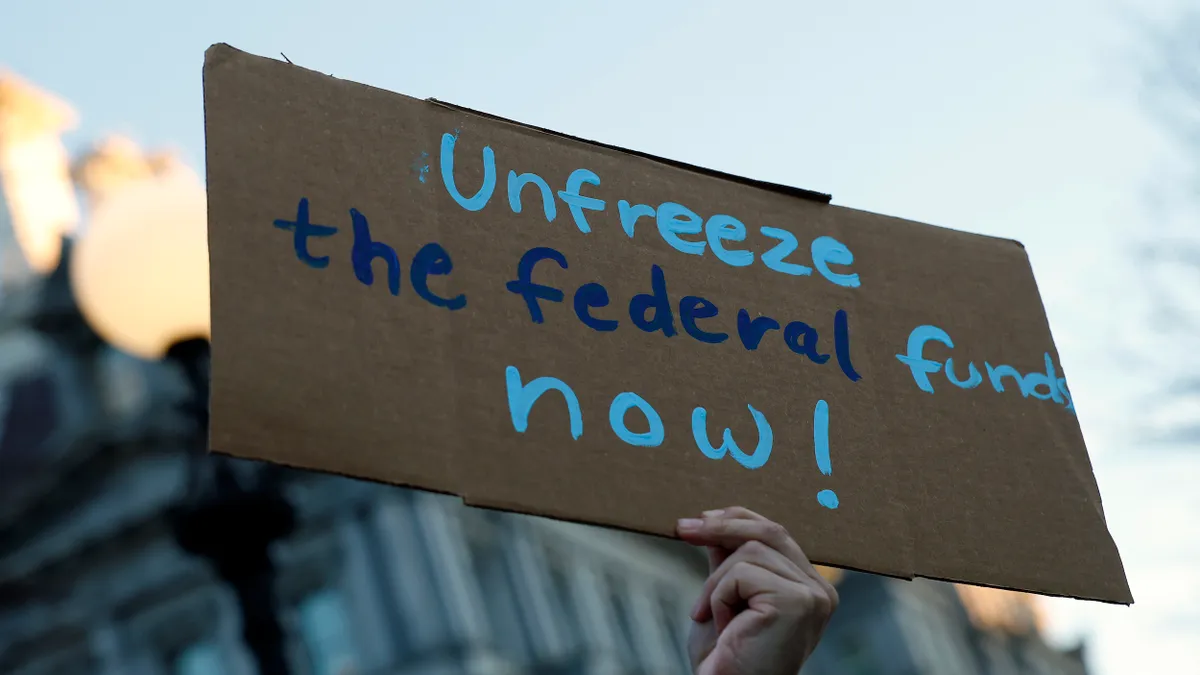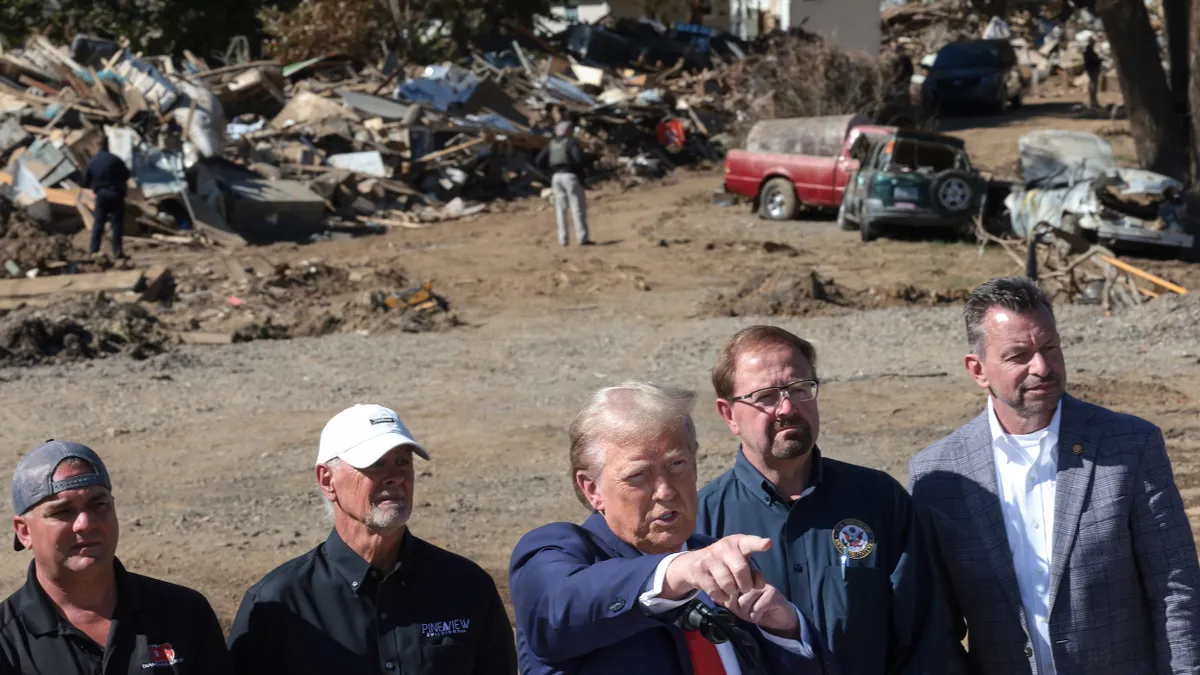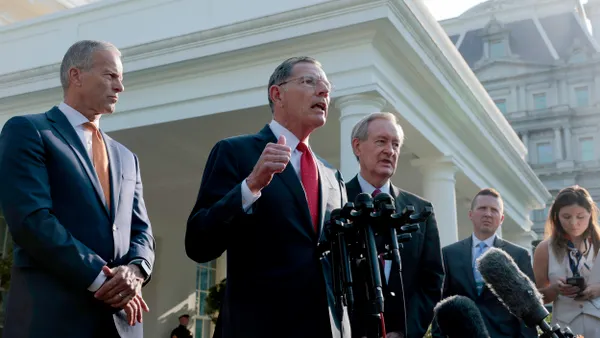Dive Brief:
- The District of Columbia has finalized a long-anticipated zero waste plan meant to help the nation’s capital achieve the goal to divert 80% of solid waste from landfills and incinerators to its “highest and best use.” The plan extends D.C.’s original 2032 diversion target year out to 2040.
- The plan includes 43 potential actions across seven overarching goals, including reducing per-capita waste generation by 15%, prioritizing reuse over single-use items, increasing recycling and composting participation and accessibility, and envisioning a materials recovery facility campus.
- It calls for establishing “non-exclusive, commercial collection zones” and banning the disposal of recyclable and compostable materials by 2032. It also calls for adopting policies by 2025 for phasing out most single-use plastics and banning them by 2030.
Dive Insight:
D.C. has been working on the zero waste plan for several years in an effort to lay out concrete steps toward its 80% diversion target. It originally called for that target in its 2013 sustainability plan.
D.C. hosted a series of public meetings and surveys throughout the process. It integrated resident feedback into the plan, including elements such as equitable access to services, as well as the plan’s elements of education, environmental protection and inclusivity.
To achieve the new 2040 target, the city must work together to waste less, reuse more and “recycle and compost on a larger scale,” said Mayor Muriel Bowser in a letter accompanying the zero waste plan, which she submitted to the D.C. Council on Feb. 8.
“While the district has made considerable progress since 2013, we need a unified strategy to accelerate our transition towards a zero waste future and disrupt entrenched solid waste disposal practices that harm our communities and environment,” she wrote.
Stemming the flow of solid waste is one facet of the plan. The city estimates the solid waste stream was about 1.14 million tons per year in 2018, the year used as the plan baseline. That amount is expected to reach about 1.4 million tons by 2038. By 2040, D.C. hopes to divert about 958,442 tons per year.
To get insight into the waste stream, D.C. calls for all licensed solid waste haulers that operate within the city, as well as solid waste facilities that operate within 200 miles, to report data such as tonnage, material type, and the final destination of the materials collected within the city. D.C.’s Public Works Department handles collection for residences of three units and under, while other haulers handle the rest.
It also calls for establishing commercial collection zones that will “enable the District of Columbia Government to designate where the city’s discarded materials are taken.” The plan lists this as a medium-term priority and does not include a deadline for the process. DPW did not respond to a request for comment in time for publication.
New York City recently announced implementation timing for its own multi-year, nonexclusive commercial waste franchise system and Los Angeles has operated one for multiple years. Other cities, such as Chicago and Boston, have also explored the concept as part of newer waste reduction plans.
D.C. also plans to study and pilot a pay-as-you-throw collection system for recycling, organics and trash, but adds in the plan that it will likely modify the program based on residents’ income.
The plan also calls for making recycling and composting more accessible for residents. That could mean making more public waste and recycling bins available and improving waste collection infrastructure to better recover recyclable and “hard-to-recycle” materials. The plan envisions building more zero waste “hubs,” available as a mobile service or in public spaces, where residents can conveniently drop off items.
The plan also envisions opening a “zero waste campus” with a materials recovery facility and drop-off center for hard-to-recycle items, commercial glass bunkers, a commercial food scrap pre-processing area for anaerobic digestion and a community reuse space.
The plan suggests forming a working group with EPA Region 3 and local tribes to develop a “unified approach” to growing regional infrastructure for recycling, composting and anaerobic digestion.
D.C. currently operates a curbside organics collection pilot for some residents, which currently serves about 9,000 households and could be expanded to all single-family households as part of the plan.
Curbside food waste collection is listed in the plan as residents’ top priority based on feedback, followed by the ability to schedule curbside collection services for items like paint, e-waste and batteries. Residents also called for more drop-off locations for battery recycling. D.C. envisions adopting a universal recycling and composting ordinance by 2025 to require source separation within “all commercial, institutional, governmental, and multi-family residential buildings.”
The plan also takes aim at single-use plastics by setting out a series of target dates for phasing out and eventually banning most types of single-use plastic items and banning the disposal of recyclables and organics. It’s part of the plan’s vision to favor more reuse and refill initiatives.
“The Zero Waste DC Plan calls for the rapid adoption of aggressive policy tools that are designed to disrupt the ‘take-make-waste’ status quo, in transition towards a local reuse economy, and throws down the gauntlet on the wasteful plastics industry,” said Blake Adams, former manager of DPW’s Office of Waste Diversion, in a LinkedIn post.
For example, food service establishments could eventually be required to offer reusable or compostable food service ware options for takeout. The plan calls for all D.C. businesses to “refrain from distributing” single-use items like carry-out bags, paper receipts and condiment packets unless customers request them.
The estimated total cost to implement the Zero Waste DC Plan is about $913.5 million through 2040, but officials said in the plan that the net cost could be closer to $484 million because of cost savings of about 47 cents per dollar spent. About $67 million of that cost is expected to be spent directly on community financial assistance and incentives, and the plan is expected to create about 300 “green” jobs.
When fully implemented, D.C. estimates the plan’s actions could collectively reduce annual greenhouse gas emissions by 1.38 million metric tons of carbon dioxide equivalent.












